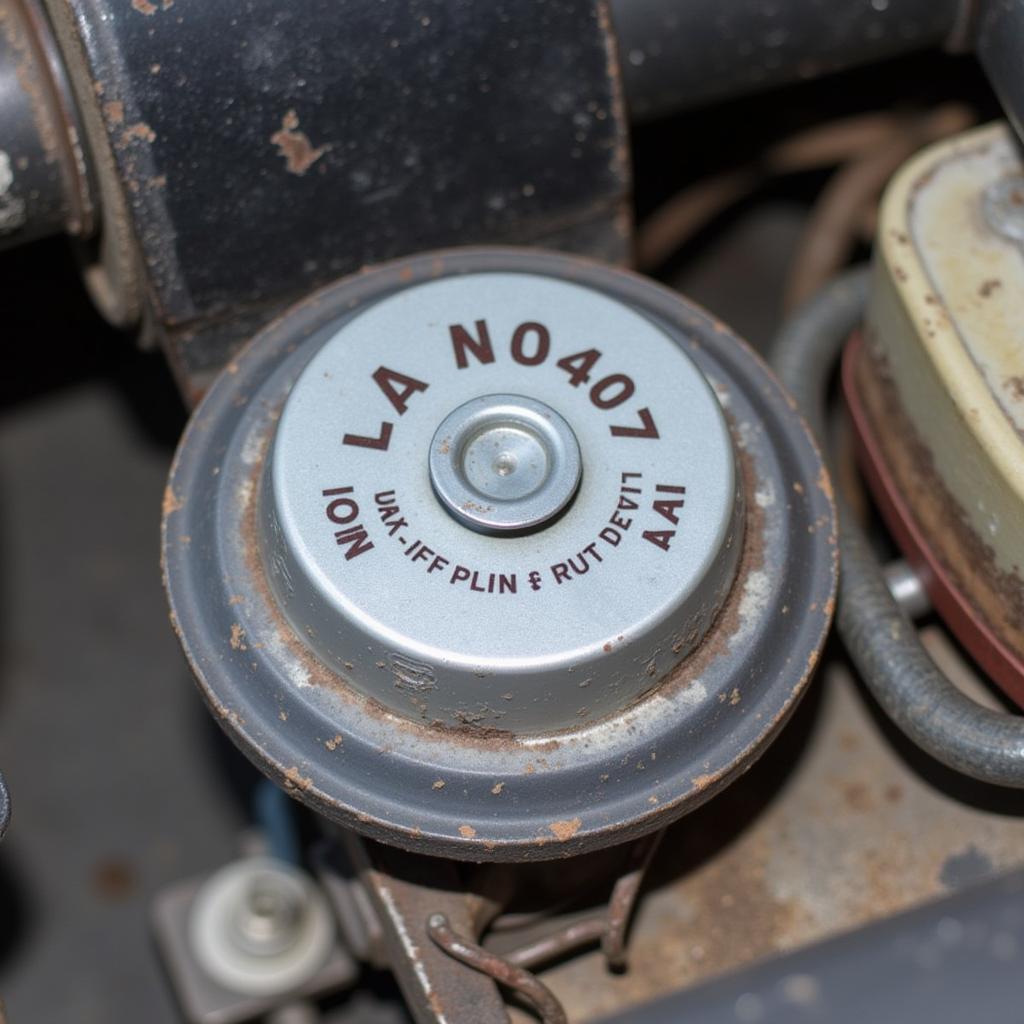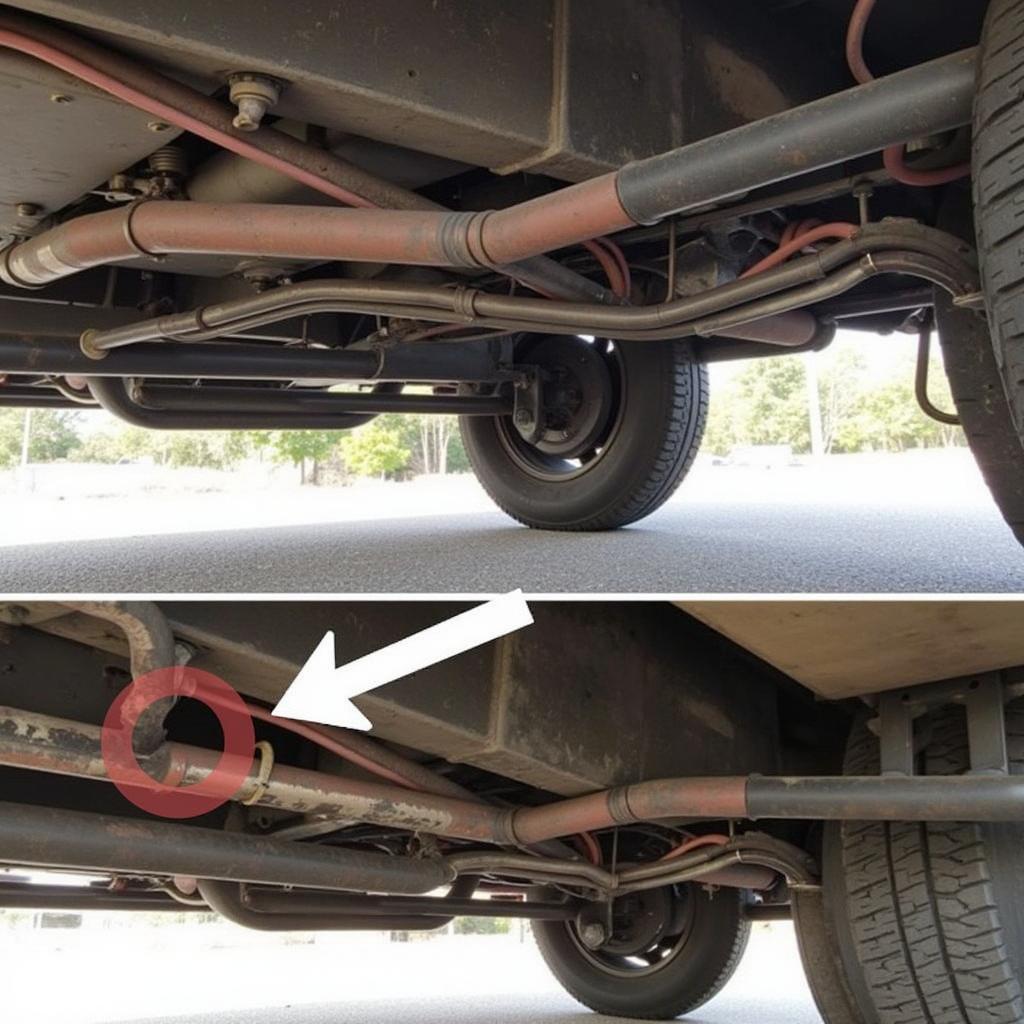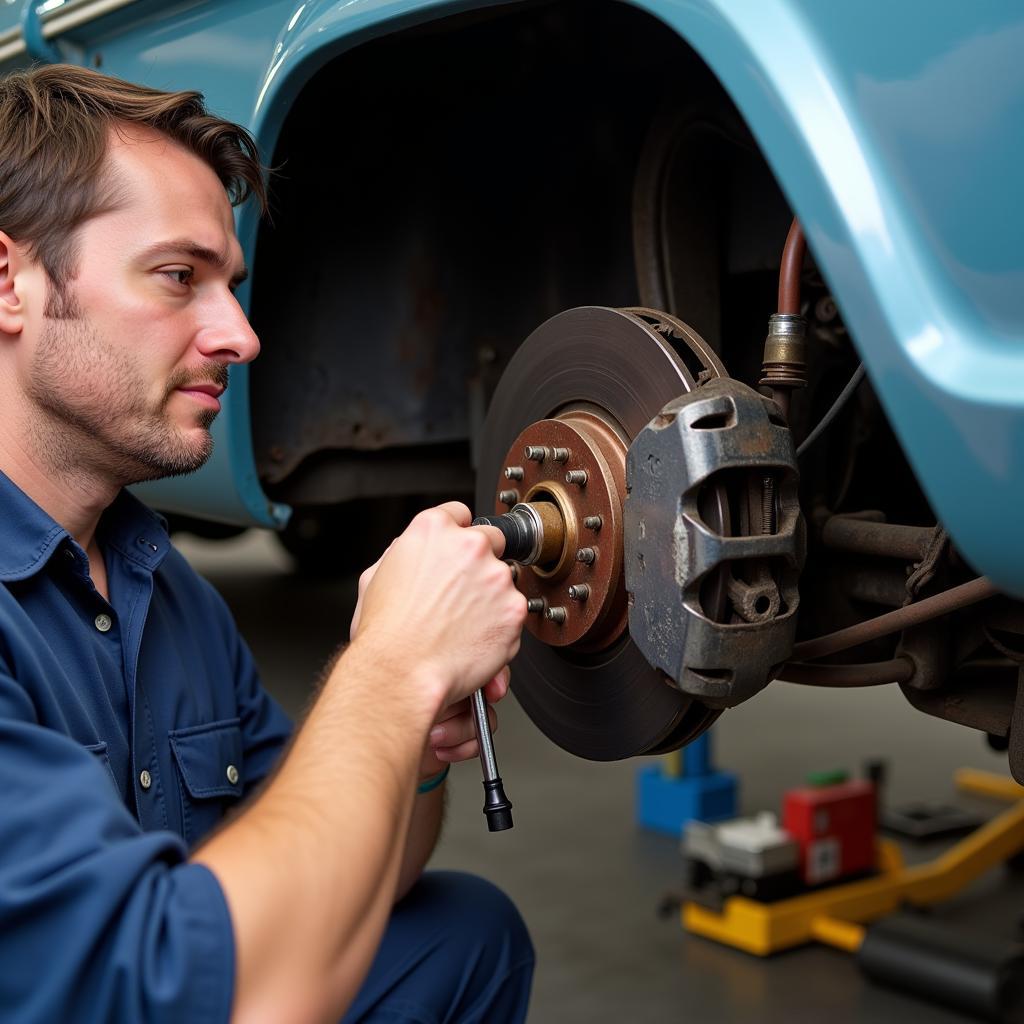The brake warning light on your 1969 Ford F100 is a crucial safety feature that shouldn’t be ignored. When illuminated, it signals a potential issue with your truck’s braking system that requires immediate attention. While the sight of this light can be unsettling, understanding its potential causes and knowing how to troubleshoot them can save you time, money, and even prevent an accident.
Common Causes of a Lit Brake Warning Light
Several factors can trigger the brake warning light in your 1969 F100. These range from simple issues like low brake fluid to more complex problems with the braking system components. Here’s a breakdown of the most common culprits:
-
Low Brake Fluid: This is the most frequent reason for the brake warning light to illuminate. As brake pads wear down, the brake fluid level in the master cylinder naturally drops. If it falls below a safe level, the warning light will activate.
-
Worn Brake Pads: Brake pads are designed to wear down over time. When they become too thin, the brake warning light serves as a reminder that it’s time for a replacement. Ignoring this signal can lead to metal-on-metal contact, resulting in costly damage to your rotors.
-
Faulty Brake Light Switch: The brake light switch, located near the brake pedal, is responsible for activating your brake lights when you press the pedal. A malfunctioning switch can disrupt the signal, leading to a lit warning light.
-
Master Cylinder Issues: The master cylinder plays a vital role in converting the force applied to your brake pedal into hydraulic pressure that activates the brakes. If the master cylinder leaks or fails internally, it can trigger the warning light and compromise your braking ability.
-
Brake Line Problems: Brake lines carry the vital brake fluid from the master cylinder to the wheels. A leak or blockage in these lines can lead to a loss of pressure and trigger the warning light.
 Brake Fluid Reservoir
Brake Fluid Reservoir
Troubleshooting the Brake Warning Light
Before you jump into complex repairs, it’s crucial to perform some basic checks to identify the root cause of the problem:
-
Check the Brake Fluid Level: Park your F100 on a level surface and locate the brake fluid reservoir. It’s usually a translucent plastic container mounted on the master cylinder. Check the fluid level against the “Min” and “Max” markings. If it’s low, add the correct type of brake fluid recommended for your truck.
-
Inspect for Leaks: Carefully examine the area around the master cylinder, brake lines, and wheel cylinders for any signs of fluid leaks. Look for wet spots, drips, or puddles of brake fluid. If you find a leak, it’s best to address it immediately.
-
Test the Brake Lights: Have a helper press the brake pedal while you observe the brake lights. If they don’t illuminate or remain dim, it could indicate a faulty brake light switch that needs replacement.
 Inspecting Brake Lines for Leaks
Inspecting Brake Lines for Leaks
When to Seek Professional Help
While some brake warning light issues can be addressed with basic troubleshooting, more complex problems require the expertise of a qualified mechanic. Here are situations where professional assistance is recommended:
- You’re uncomfortable working on your vehicle’s braking system.
- You’ve identified a leak but are unsure of its source.
- The brake warning light remains illuminated after adding fluid and inspecting for leaks.
- Your brakes are exhibiting unusual behavior, such as a soft or spongy pedal feel, unusual noises, or pulling to one side.
“Brakes are not something to gamble with,” says John Miller, a veteran mechanic with over 30 years of experience working on classic Ford trucks. “If you’re unsure about any aspect of your truck’s braking system, it’s always best to err on the side of caution and consult a professional.”
 Mechanic Inspecting Brakes
Mechanic Inspecting Brakes
Conclusion
Addressing a lit brake warning light promptly is essential for ensuring the safe operation of your 1969 Ford F100. By understanding the potential causes and following the troubleshooting steps outlined above, you can often resolve simple issues yourself. However, don’t hesitate to seek professional assistance for more complex problems or if you’re uncomfortable working on your truck’s braking system. Remember, maintaining a safe and reliable braking system is paramount for both your safety and the longevity of your classic Ford truck.

